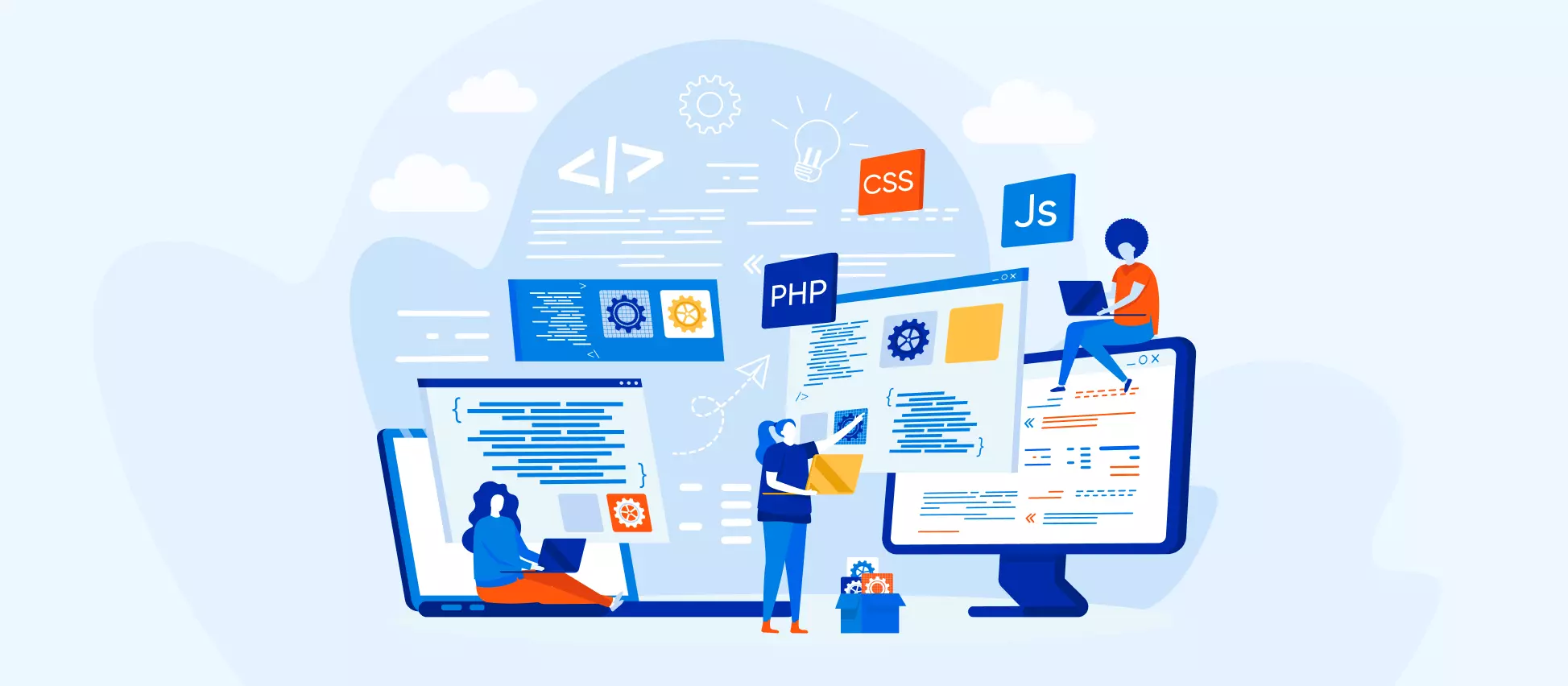IT-dictionary. Frontend & Backend. What does it mean?

For beginners in web programming, understanding the difference between Frontend and Backend can be confusing. Understanding this division is crucial for web developers, as it determines which technologies and skills they need to focus on. Even freelancers sometimes struggle with figuring out what belongs to Backend versus Frontend. Let’s explore this topic and clarify what these terms really mean!
Frontend and Backend: In a Nutshell

First and foremost, let’s consult Wikipedia to grasp the essence of these concepts.
- Frontend (front-end): The client-side of the user interface, the area with which the user interacts.
- Backend (back-end): The programmatic and hardware component of the service responsible for the internal functioning of the website.
In simple terms, Frontend takes care of what the user sees, while Backend deals with what happens “under the hood.” However, let’s dive deeper into the intricacies.
Frontend Development
Example of Technologies: HTML, CSS, JavaScript, JavaScript Frameworks.
Code Deployment: Browser.
Key Tasks: UI/UX, Design, Markup, AJAX, requests.
A Frontend developer crafts the magic of the user interface. The primary objective is to transform static designs into a lively, functional website. This can be achieved using fundamental tools such as HTML/CSS/JS or by leveraging frameworks and libraries like ReactJS and Bootstrap.
It’s crucial to note that Frontend developers stay clear of the server domain. All information displayed on the site comes through APIs written by Backend developers.
Backend Development
Example of Technologies: PHP, Java, Python, NodeJS, SQL, MySQL.
Code Deployment: Server.
Key Tasks: Databases, Linux, Server.
A Backend developer concentrates on the server-side. Their focus is not on altering the external interface; instead, they work with data arriving from sources like GET requests. They utilize programming languages executed exclusively on the server.

Now, let’s break down an example. Suppose a client needs a website that accepts applications and stores them in a database. The Frontend developer’s role in this project would involve crafting the user interface – designing the layout, creating forms for users to input their information, and ensuring that the website looks visually appealing and functions smoothly across different devices and browsers.
On the other hand, the Backend developer’s responsibility would be to handle the data processing and storage aspects of the application. They would write code that runs on the server and interacts with the database. For instance, when a user submits an application form, the Backend developer’s code receives the data, validates it, and then stores it securely in the database. Additionally, they might implement features like user authentication and authorization to ensure that only authorized users can access certain parts of the website or data.
In this scenario, the Frontend developer focuses on the presentation layer, making sure that the website is user-friendly and visually appealing, while the Backend developer deals with the behind-the-scenes functionality, ensuring that data is processed, stored, and managed securely and efficiently.
And there you have it! Hopefully, the distinction between Frontend and Backend is now clearer.
Until next time! 😉
